Enjoy this post? Rate it!


TOEFL integrated writing task 2023 | Examples and sample essay.
Want to excel in the toefl writing task elevate your skills with the most up-to-date examples, carefully crafted sample essays, and insights in 2023. maximize your potential to succeed in the integrated writing task., table of contents, introduction, toefl integrated writing task structure and format , toefl writing task topics , toefl writing task sample , toefl writing task pdf and other resources , strategies for toefl integrated writing task , scoring criteria for toefl writing task , key tips for success , example 1: environmental conservation , example 2: technological advancements in medicine , introduction: , body: , key takeaways .
TOEFL (Test of English as a Foreign Language) is a critical stepping stone for students who aspire to study in English-speaking universities. The TOEFL writing task is one part of this examination that can often become a cause for concern. It not only tests your ability to understand English but also your ability to express thoughts, ideas, and opinions in a clear and precise manner.
In this comprehensive guide, we will explore various aspects of the TOEFL writing task, including topics, samples, format, and specific answers to common questions. The information provided is tailored to the 2023 edition of the test, ensuring relevance and applicability to your preparation. So, if you’re planning to take on this challenge in 2023, let’s begin by understanding the structure and requirements of the TOEFL writing task.
The TOEFL integrated writing task is the first of the two writing tasks in the TOEFL exam. It’s designed to assess your ability to combine listening and reading skills to write a coherent and well-structured essay. Here’s a detailed breakdown:
- Reading passage : A passage around 200-250 words long is provided. You’ll have three minutes to read it.
- Listening clip : A short lecture related to the reading passage is played. You’ll be given time to take notes to remember the content better.
- Writing task : You will have 20 minutes to write a response of about 150-225 words, summarizing the points made in the lecture and explaining how they relate to specific points in the reading passage.
The topics for the TOEFL integrated writing task are generally academic and range from subjects like history, science, art, and social sciences. Here’s an example of how the topics will be given:
- Reading passage : An excerpt will be provided about Renaissance art and its influence.
- Listening clip : A lecture discussing a specific Renaissance painting.
- Writing task : Compare and contrast the information in the reading passage and the lecture.
Practicing in advance by working on such topics will help you write and format your writing tasks better. Here’s a sample for you to practice:

- Reading passage: Brief description of climate change and its effects.
- Listening clip : A lecture discussing various solutions to combat climate change.
- Writing task : Summarize the solutions from the lecture and relate them to the problems mentioned in the reading passage.
To support your preparation, TOEFL writing task PDF materials, containing practice questions and samples are available online. These resources often include:
- Guides on TOEFL writing format
- Collection of TOEFL writing samples with answers PDF
- TOEFL writing task 1 sample answers and TOEFL writing task 2 sample answers
- Practice tests for TOEFL writing task 2
These materials are instrumental in understanding the pattern and honing your skills to succeed in the TOEFL writing task.
- Understanding the structure : Familiarize yourself with the TOEFL writing format, including reading, listening, and writing phases.
- Time management: Allocate time for reading, note-taking, and writing, keeping in mind the 20-minute time limit for the writing task.
- Note-taking skills : Practice jotting down crucial points from both the reading passage and the listening clip. Focus on the main ideas, supporting details, and the relationship between the reading and listening parts.
- Creating an outline : Before diving into writing, create a rough outline to organize your thoughts. This helps in maintaining coherence and connection between various sections of the essay.
- Practicing with samples : Utilize the TOEFL writing task sample, TOEFL writing task 1 sample answers, and TOEFL writing task 2 sample answers for regular practice.
Understanding the scoring can guide you in preparing effectively. The TOEFL integrated writing task is scored on a scale of 0-5 based on the following criteria:
- Content : Accuracy, completeness, and connection between reading and listening.
- Organization : Logical progression, clear introduction, body, and conclusion.
- Language use : Grammar, vocabulary, sentence structure, and overall fluency.
- Use transitional phrases : Transitional words like “however,” “in addition,” and “therefore” can help in maintaining the flow.
- Avoid repetition : While using keywords is vital, avoid unnecessary repetition. Make sure your content is varied and engaging.
- Proofread : Reserve some time at the end for revising and correcting errors.
- Access Quality Resources : Consider TOEFL writing samples with answers PDF, TOEFL writing task PDF guides, and practice tests for well-rounded preparation.
- Tables, quizzes, and other interactive elements: Incorporating tables and quizzes can be an excellent way to enhance the learning experience. For instance, a table comparing different TOEFL writing task topics or a quiz testing understanding of TOEFL writing format can be included in online learning platforms or books.

Examples of TOEFL integrated writing task
The TOEFL integrated writing task presents a unique challenge to assess your ability to analyze information from both a reading passage and a lecture. In this task, you must demonstrate your comprehension of the material and your capacity to connect ideas between the text and the spoken content. To give you a clearer picture, let’s dive into a few illustrative examples of TOEFL-integrated writing tasks:
Reading passage : Description of deforestation and its impact on biodiversity.
Listening Clip : A lecture discussing various conservation methods employed globally.
Writing task:
- Reading: The passage highlights the critical loss of forests, leading to a decline in biodiversity and environmental balance.
- Listening: The speaker introduces multiple conservation techniques such as reforestation, wildlife corridors, and legal enforcement.
- Essay: The essay must summarise the conservation methods mentioned in the lecture and relate them to the problems of deforestation and biodiversity loss detailed in the reading passage.
Reading passage: An overview of the traditional medical practices and their limitations.
Listening clip: A lecture elaborating on recent technological advancements in medical diagnostics and treatments.
Writing task :
- Reading: The passage outlines traditional medical practices, emphasizing their limitations in accuracy and efficiency.
- Listening : The lecturer elaborates on cutting-edge technologies like AI-powered diagnostics, robotic surgeries, and personalized medicine.
- Essay : The essay should connect the advancements discussed in the lecture with the limitations outlined in the reading passage, showcasing how technology is revolutionizing medical practice.
In-depth Analysis of a Sample Essay | Environmental conservation
The essay must have a good flow and cohesiveness. This makes it easier to understand and leave a good impression. Here is the in-depth analysis of an essay on environmental conservation.
“The loss of forests and biodiversity has long been a global concern. However, modern conservation methods, as described in the lecture, offer promising solutions to the challenges outlined in the reading passage.”
- Paragraph 1: Discuss reforestation, its importance, and how it directly addresses deforestation.
- Paragraph 2: Explore wildlife corridors and their role in preserving biodiversity.
- Paragraph 3 : Explain legal enforcement, international agreements, and their impact on conservation efforts.
- The TOEFL-integrated writing task involves reading, listening, and writing. Understand the flow and practice each part.
- Make use of TOEFL writing samples with answers PDF, TOEFL writing task PDF guides, and various other materials for practice.
- Your essay should logically connect the reading and listening parts, maintaining a clear and concise structure.
The innovative conservation techniques described in the lecture provide a comprehensive approach to combating the grave issues of deforestation and biodiversity loss mentioned in the reading passage. These methods signify hope and progress in environmental preservation.
We hope you found this article insightful. If you have any more queries please reach out to us and get them solved quickly!
Liked this blog? Read: TOEFL requirements 2023 | Documents and minimum requirements guide.
1. How much time do I have for the TOEFL Integrated Writing Task?
Ans. You have 3 minutes to read the passage, a listening time for the clip, and 20 minutes to write the essay.
2. Can I take notes during the listening part of the TOEFL Writing Task?
Ans. Yes, taking notes is allowed and advisable during the listening portion.
3. What types of topics are covered in the TOEFL Writing Task Topics?
Ans. Topics are typically academic, ranging from history, science, art to social sciences.
4. Where can I find TOEFL Writing Task 1 sample answers and TOEFL Writing Task 2 sample answers?
Ans. Various online platforms, prep books, and official TOEFL guides provide these samples.
How useful was this post?
Click on a star to rate it!
Average rating 3.3 / 5. Vote count: 3
No votes so far! Be the first to rate this post.
People also liked

IELTS success| Tips to master each section
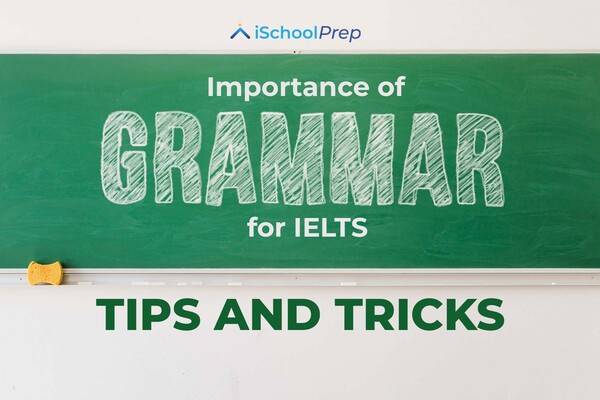
Importance of IELTS grammar | Tips and tricks

TOEFL and IELTS | Role of contextual & academic words
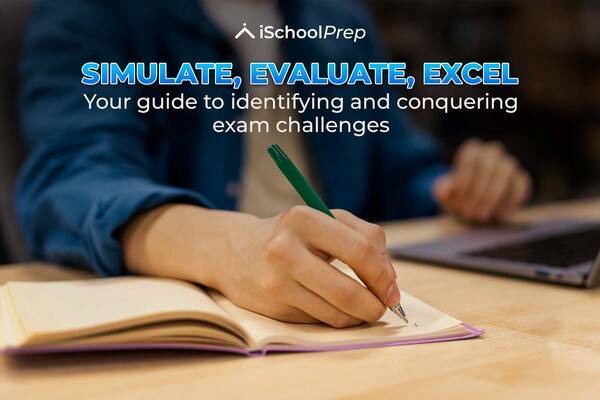
Simulated tests | Opportunity to overcome challenges
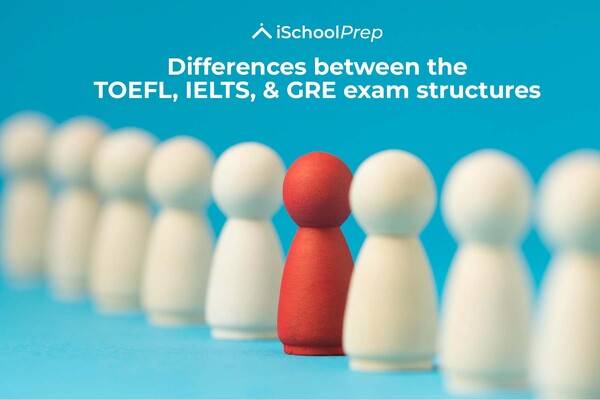
TOEFL, IELTS, & GRE exam structure | Key differences 2024!

Ace the GMAT exam | Navigate quant & verbal difficulties!
Leave a reply cancel reply.
Your email address will not be published. Required fields are marked *
Please enter an answer in digits: eight + 11 =
Start your journey with iSchoolPrep
Need help with your Test Preparations? Contact Us for more details
Inquire Now
Get e-books, expert guidance, live classes and more....
This is TestGlider blog discussing TOEFL and IELTS.
How to Write a TOEFL Integrated Essay
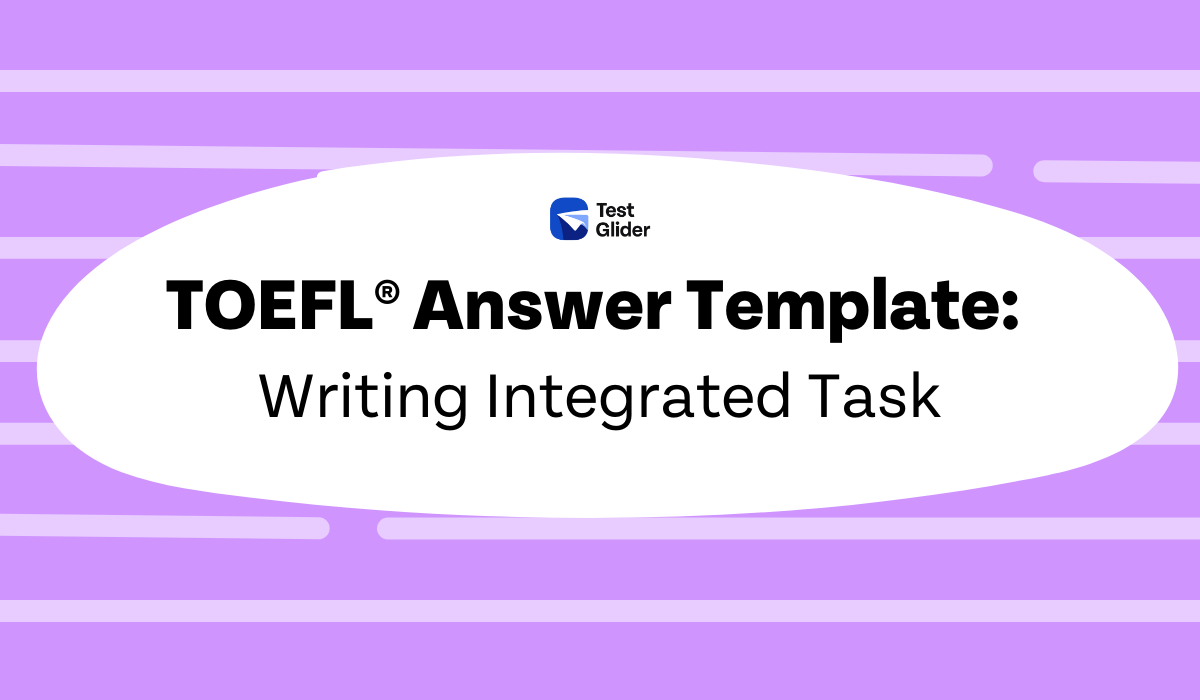
The writing section is the final section of the TOEFL test. It has 2 different question types, and you get one question from each question type in your test. You only get 20 minutes for question 1 and 30 minutes for question 2 , so it can be difficult at first to come up with a high-scoring essay within such a short time. To help you with that, here are the structure templates that can help you write a high-scoring TOEFL Integrated essay.
This blog post is a part of a series where I post templates for all TOEFL Speaking and Writing questions. As a part of this series, I will introduce you to structure templates for 4 speaking and 2 writing tasks, along with model answers written based on those templates.
This is the second post: How to write a TOEFL integrated essay.
I will include the reading passage and the lecture script just so you have an idea of what the topic is about when I am explaining the structure using the model essay.
Table of Contents
TOEFL Writing Integrated Reading Passage
Despite the worldly fame of William Shakespeare’s literary works, little is known about his life. Most of the facts we know are simply theories and rumors. The lack of specific records created many doubts about Shakespeare’s existence. Some have been arguing that there were other people who actually wrote the works under Shakespeare’s name. The first candidate is Francis Bacon, who was a famous scientist, theorist, and philosopher in the 16th century. This theory gained support because of the legal references indicated in Shakespeare’s plays and poems. For example, some of Shakespeare’s poems such as “Venus and Adonis” and “The Rape of Lucrece” imply legal ideas that Francis Bacon was known to support. The second candidate is Christopher Marlowe, who was a playwright and poet that lived in the same period as Shakespeare. Marlowe’s death is thought to be linked to the birth of the Shakespeare name. Some people believe that his death was faked to allow him to escape religious trials. He is then thought to have used the name of William Shakespeare to continue writing. The third candidate is Edward de Vere, an English nobleman who worked as a courtier in the 16th century. Back then, the writings of the authors that were from the noble class were restricted to a private audience. Edward de Vere was also one of those authors. Since he wasn’t able to take credit for his writing publically, many claim that Edward de Vere used a false name, William Shakespeare, to reach a broader audience. This enabled him to receive the spotlight and create famous masterpieces.
Although there is no clear historical evidence that proves William Shakespeare’s existence, the theories in the reading about the identity behind the Shakespeare name are full of errors. First of all, even though Francis Bacon and Shakespeare shared similar legal ideas, Francis Bacon’s academic background contradicts some of the scientific ideas in Shakespeare’s works. For instance, certain parts in Shakespeare’s canon and plays show a misunderstanding of the mainstream scientific beliefs of the time that Francis Bacon would not have had. Especially about astronomy beliefs, we can know that the ideas of these two figures don’t match. Next, Christopher Marlowe’s death has nothing to do with Shakespeare. All the plays Marlowe wrote were published under his own name after his death in 1593, which was very unlikely to happen for a person who was regarded as a religious criminal. Meanwhile, 37 other plays and 154 sonnets were published under the name of William Shakespeare. This theory doesn’t make sense because there was no reason for Marlowe to use a different name. And lastly, Edward de Vere couldn’t have used the name of Shakespeare because he died before the time some of Shakespeare’s works were newly published. Evidence clearly shows that many of Shakespeare’s plays and poems such as Macbeth, King Lear, and Tempest were written and revised in 1621, which is long after Edward de Vere died in 1604. Even if someone else had given the works to the publishers instead, revising them would have been quite impossible because no one would know what kind of stories Shakespeare wanted to publish.
Model Answer:
Both the reading passage and the lecture discuss three theories regarding the real identity of William Shakespeare. The reading passage mentions three people who could have used the name William Shakespeare as an alias, while the lecture contradicts the reading passage on all three points. First, the reading passage talks about the possibility of Francis Bacon being the person behind the name of Shakespeare. This theory is based on the idea that the legal references that appear in Shakespeare’s works are also known to be supported by Bacon. However, the lecture refutes this claim by stating that although the two people shared the same legal ideas, Shakespeare’s works also included scientific ideas that would not be supported by Bacon. Bacon’s academic background would contradict such ideas. Since Shakespeare’s works did not follow the mainstream scientific beliefs, his ideas on astronomy significantly differed from Bacon’s. Second, the reading passage suggests Christopher Marlowe as the second candidate. According to the passage, Marlowe faked his death to escape from religious trials and used the name of Shakespeare to publish his work. The lecture refutes this by asserting that Marlowe’s death had nothing to do with Shakespeare. Since some of Marlowe’s works were published under his own name after his death, it does not make sense for Marlow to also use a different name. The final theory in the reading is about Edward de Vere, an English nobleman who might have used the name of Shakespeare to receive credit publically. The lecture opposes this theory as well by stating that de Vere could not have used the name of Shakespeare since he died before some of Shakespeare’s works were revised and published. Even if someone else had given the works to a publisher, there is no way that the publisher would have known how to revise the work. In conclusion, while the reading passage introduces three different candidates who might have used the name of William Shakespeare, the lecture refutes all of the theories.
Before moving on to individual paragraphs, you should be aware of the general structure of TOEFL integrated essays. Your essay should include an introduction, 3 body paragraphs(one for each point), and a conclusion(optional). Since you need to show that you understood the connection between the reading passage and the lecture, each body paragraph should include one point from the reading and the related point from the lecture.
Now let’s take a look at how each paragraph is structured, starting with the introduction paragraph.

Main Topic: In this part, you explain the topic that is being discussed in both the reading passage and the lecture. This shows that you understood what the reading passage and the lecture were talking about.
Link between the reading passage and the lecture : This is where you explain the connection between the two sources. Most of the time, the lecture goes against whatever the reading says, so keep that in mind.
Moving on to the body paragraphs:

Transition Word: Make sure you start your body paragraphs with appropriate transition words. This makes your essay look coherent and easy to read. You can also include transitions between your explanation of the reading passage and the lecture.
Reading Passage: This part is where you paraphrase the information you got from the reading passage. Make sure you do not copy the sentences word by word from the reading passage. You should always rephrase the sentences in your own words because copying them will lead to point deductions. Also, notice how in all 3 body paragraphs, the explanation of the reading passage is 2 sentences or less? Some students tend to include a lot of details from the reading passage because they can always read the passage while writing the essay. However, your explanation of the lecture should be longer and more detailed than your explanation of the reading passage. This means you should not waste your time trying to explain ALL the details mentioned in the reading passage. Use the passage as a guide to help you organize the key points in case you miss anything while trying to take notes for the lecture part.
Lecture: This is the most important part of your body paragraph. In order to get this part right, you need to have solid note-taking skills. So assuming you have taken good notes, the lecture part should be fairly easy to write. Just connect the information that you noted down to the information you got from the reading passage. Make sure you include appropriate details to support the key points mentioned in the lecture. And always keep in mind that you should try to include more information about the lecture than the passage.
Here is an example of a note-taking table that you can use to match key points from the two sources.

Last is the conclusion paragraph:
In conclusion, while the reading passage introduces three different candidates who might have used the name of William Shakespeare, the lecture refutes all of the theories.
In TOEFL integrated essays, the conclusion paragraph is totally optional. If you have enough time left, go ahead, but if you do not have enough time, focus on the body paragraphs and skip the conclusion. If you do write one, your conclusion should restate the information in the introduction paragraph. Here, the author rephrases the “Link between the reading passage and the lecture” part.
The final structure of your integrated essay should look like this:

This concludes today’s post. Please look forward to upcoming posts on the speaking section!
➡️ Practice with TestGlider Mock Tests
How to Score a 5/5 on the TOEFL Essay: Integrated Task
For many students taking the TOEFL, scoring a 5 out of 5 on each of the two TOEFL essays—which would lead to a perfect score of 30 in the writing section—is the ultimate goal. Getting there takes a lot of practice , but it pays off nicely! Scoring so high in one section can counterbalance slightly lower scores in other sections, helping you to get to your total target score with more ease (be sure to check your institution’s requirements, however; some universities will require a minimum score per section).
Because the two essays require slightly different skills, the ETS (the organization that administers the TOEFL) provides two separate rubrics for how to obtain a top score on the TOEFL essays. For those of you who are curious about the criteria for other scores, you can find that information here: at the test maker’s website . For those of you aiming to get a five, let’s keep going! Let’s start where the TOEFL writing section itself begins: with the integrated task.
The integrated essay will provide you with a lecture and a written passage on different aspects of the same topic. According to the ETS, the criteria for a top score on this essay include:

- Correctly selecting all important information
- Accurately and clearly representing the information.
- Showing good organization
- Having minimal errors in language use. If there are errors, they must not cause the information itself to become inaccurate or unclear.
Breaking that down, the first important task in getting that top score is going to be selecting the relevant information from the lecture, and then the reading. Good note-taking is vital here, and good note-taking takes practice! Listen to the emphasis that the speaker places on keywords, and look out for the thesis statement and supporting examples in the reading. Circle them in your notes.
The second important task is relating the lecture to the reading. Look at what you’ve circled. Does one contradict the other? Build on the other? Elaborate on a different aspect of the other? Figure out how they relate before you go on to the next important step: writing a well-organized response. To do this, you’ll want to create an outline.
Make sure that your outline has your thesis statement clearly defined. This thesis statement should explain how the lecture and the reading relate to one another. You’ll also want to have a brief summary of the lecture and the reading (one to two sentences is sufficient for this!) Then, build your body paragraphs around your main examples, which you’ll already have circled in your notes.
As you write, don’t worry about everything being perfect. That said, leave 2-3 minutes at the end of the exam to proofread what you’ve written. Because these essays are graded holistically, you won’t lose points for minor errors as long as they don’t change the meaning of your ideas. However, a lot of errors can add up to a confusing essay, which will definitely lead to a lower score.
The integrated task is only one of the two essays you’ll write on test day. Next time, we’ll take a look at the independent task, and how that differs from the integrated task you’ve mastered!

Rachel is one of Magoosh’s Content Creators. She writes and updates content on our High School and GRE Blogs to ensure students are equipped with the best information during their test prep journey. As a test-prep instructor for more than five years in there different countries, Rachel has helped students around the world prepare for various standardized tests, including the SAT, ACT, TOEFL, GRE, and GMAT, and she is one of the authors of our Magoosh ACT Prep Book . Rachel has a Bachelor of Arts in Comparative Literature from Brown University, an MA in Cinematography from the Université de Paris VII, and a Ph.D. in Film Studies from University College London. For over a decade, Rachel has honed her craft as a fiction and memoir writer and public speaker. Her novel, THE BALLERINAS , is forthcoming in December 2021 from St. Martin’s Press , while her memoir, GRADUATES IN WONDERLAND , co-written with Jessica Pan, was published in 2014 by Penguin Random House. Her work has appeared in over a dozen online and print publications, including Vanity Fair Hollywood. When she isn’t strategically stringing words together at Magoosh, you can find Rachel riding horses or with her nose in a book. Join her on Twitter , Instagram , or Facebook !
View all posts
More from Magoosh

Leave a Reply Cancel reply
Your email address will not be published. Required fields are marked *
- The Writing Process
- Addressing the Prompt
- Writing Skill: Development
- Originality
- Timed Writing (Expectations)
- Integrated Writing (Writing Process)
- Introduction to Academic Essays
- Organization
- Introduction Paragraphs
- Body Paragraphs
- Conclusion Paragraphs
- Example Essay 1
- Example Essay 2
- Timed Writing (The Prompt)
Integrated Writing (TOEFL Task 1)
- Process Essays
- Process Essay Example 1
- Process Essay Example 2
- Writing Skill: Unity
- Revise A Process Essay
- Timed Writing (Choose a Position)
- Integrated Writing (TOEFL Task 2)
- Comparison Essays
- Comparison Essay Example 1
- Comparison Essay Example 2
- Writing Skill: Cohesion
- Revise A Comparison Essay
- Timed Writing (Plans & Problems)
- Integrated Writing (Word Choice)
- Problem/Solution Essays
- Problem/Solution Essay Example 1
- Problem/Solution Example Essay 2
- Writing Skill: Summary
- Revise A Problem/Solution Essay
- Timed Writing (Revising)
- Integrated Writing (Summary)
- More Writing Skills
- Punctuation
- Simple Sentences
- Compound Sentences
- Complex Sentences Part 1
- Complex Sentences Part 2
- Using Academic Vocabulary
- Translations
Choose a Sign-in Option
Tools and Settings
Questions and Tasks
Citation and Embed Code

Sharing ideas that you learn from reading or listening is an important part of writing. Because it is an important part of college writing, it is a task included on the TOEFL. The first writing task in the TOEFL has very specific requirements. This chapter will explain how to be successful in this type of integrated writing.
The TOEFL integrated writing task is not a true essay like you practice in other parts of this textbook. There is not a full introduction. There is no conclusion. There is no place for your own personal feelings and opinions on the topic. You thesis statement is not creative. You don't need 5 paragraphs with 5 sentences each.
Task format
You will have three minutes to read a few short pargraphs from a textbook. You should take notes about the major details that the author explains. Your notes do not need to be very detailed because you can see the reading again when you start writing. The textbook will usually:
- Introduce the main idea
- Give support for the main idea with three major details
Next, you will listen to part of a lecture. The professor who give the lecture will talk about the same topic as the reading. There are two usual organizations for the lecture:
- The professor disagrees with the textbook and explains why the three points are wrong
- The professor agrees with the textbook and adds more detail to the three points
The order of the major details will be the same in the reading and lecture.
You need to take good notes during the listening. You can only listen one time.
You will have 20 minutes to write your response to the question. You will focus your answer on the lecture and explain how it connects to the textbook. Include all three of the major details.
Example: TOEFL Writing Prompt 1
The TOEFL Writing Task 1 will always ask you to summarize the lecture and compare it to the reading passage.
Prompt: Summarize the points made in the lecture, being sure to explain how they challenge specific arguments made in the reading passage.
Response format
This question asks for a summary. The easiest organization is to have 4 paragraphs. The first paragraph will explain the relationship between the reading and the listening (e.g., do they agree about the topic, or do they disagree?). The other three paragraphs will explain each major detail. You do not need a conclusion paragraph. An effective response will have approximately 200 words. Do NOT include your own opinion or any outside information.
You can get a high score on this section, if you write about the important points from the reading and listening in a clear and accurate way.
A T-Chart is a good way to organize your notes. On the left, you will write the three major details from the reading. The professor will talk about the same ideas in the same order. The T-Chart helps you know what to expect when you take notes.
This is a sample T-Chart that could be used to show the points made in the example task.
TOEFL Integrated Writing Tips
Every student will feel ready to take the TOEFL at a different time. Here are some strategies to help you prepare when you are ready.
- The prompt does not really change. The topic will be different, but you will always be comparing the reading with the listening.
- You can see the reading when you write. Only take simple notes of the major details to make it easier to listen for how the professor agrees or disagrees with that point.
- Take careful notes during the listening.
- Paragraph 1 What do the reading and lecture discuss?
- Paragraph 2 What is the speaker's first point? How does it connect to the reading?
- Paragraph 3 What is the speaker's second point? How does it connect to the reading?
- Paragraph 4 What is the speaker's third point? How does it connect to the reading?
- Look at your notes again. Did you explain the ideas from both the reading and the listening?
- Before the test, look at feedback your writing teacher gives you about your writing. Go to your writing teacher's office hours to get advice.
- You should also look at feedback your grammar teacher gives you about your writing. Go to your grammar teacher's office hours to get advice.
Exercise 1: TOEFL Writing Task 1
1. Read the passage.
2. Listen to the lecture.
3. Summarize the points made in the lecture, being sure to explain how they challenge specific arguments made in the reading passage.
Teachers have access to the "Career Planning" Integrated Writing files on the ELC Curriculum Portfolio.
This content is provided to you freely by BYU Open Learning Network.
Access it online or download it at https://open.byu.edu/academic_a_writing/integrated_writing_2 .
- Phone: +91 8466016171
- Whatsapp: +91 8208375580
- Email: contact@leapscholar.com
TOEFL Integrated Writing Task 2023: Examples & Sample Essays
- Updated On January 17, 2024
- Published In TOEFL 📚
The Test of English as a Foreign Language or TOEFL is an esteemed English proficiency exam divided into four sections. Under TOEFL writing, candidates must show how skilled they are in reading, writing, and listening to the language.
Table of Contents
There are two tasks that candidates need to face when writing this section. Task 1 is TOEFL Integrated Writing Task, and Task 2 is TOEFL Independent Writing Task. Combinedly, it is an exam of 50 minutes, but here individuals will find detailed information on Task 1 and its sample question.

What is TOEFL Writing Task 1? – TOEFL Integrated Writing Task
Integrated Writing TOEFL expects its candidates to use their reading, listening and writing skills to complete this task. In this, these candidates get three minutes to prepare for an essay by reading a short passage and listening to an audio clip relating to a single topic.
After preparing, they have 20 minutes to provide an essay providing their response to these two sources. There are two scenarios which applicants can encounter under this exam:
The best guidance for your STUDY ABROAD DREAM
Start your journey with the best study abroad experts in India

- Contradictory: An audio clip that contradicts what is mentioned in the passage.
- Supportive: An audio clip that supports what the passage says.
However, no matter the nature of these cases, applicants need to summarize their topic in 150 to 225 words. Also, they must establish a connection between the passage and the audio clip.
TOEFL Writing Integrated Task Exercises
Students aspiring to study abroad must take the initiative to sharpen their skills by practising sample papers. For this purpose, candidates can refer to the below questions on integrated task writing TOEFL .
Question 1: Summarise the essential points mentioned in this passage and give inputs according to what is mentioned in the lecture.
Sample Reading Passage:
The water on the west coast of North America used to contain several Sea Otters (small mammals), starting from California to Alaska. However, in these few years, the population of Sea Otters on this Alaskan coast has rapidly declined. Moreover, this has started directly affecting its coastal ecosystem because of its important role in maintaining a balance. With several concerns rising now, many investigators have started investigating this matter. They found it was mainly because of two reasons. One is due to attacks by predators, and the second is environmental pollution.
Environment pollution formed one of the reasons because of the fact that there is a pollution source on the Alaskan coast, i.e., oil rigs. Also, investigators took water samples to test the chemical content in it. The result was high enough to affect the immune system of water creatures, which may result in death.
Another piece of evidence pointing out water pollution as its main culprit was a similar case of decline in other sea mammals, like the seal. This proved that whatever was causing the death of Sea Otters was also taking the lives of other sea mammals. Two things can affect an entire species. It can either be water pollution or a large water predator like orcas.
Finally, researchers also blamed the pollution hypothesis for explaining the uneven decline of Sea Otter. In other words, due to ocean currents and other natural factors, the pollution may have concentrated unevenly along the coast resulting in the death of mammals in that part.
Question 2: Summarise the belief of the lecturer and how they relate to this reading passage given below.
The International Astronomical Union Conference declared the inexistence of Pluto planet on 24th August 2006. It was initially discovered by scientists in 1930. It is when they were searching for the cause of what was interfering with the orbit of Uranus planet. At first, researchers believed Pluto was of the same size as the earth but later found it was even smaller than our earth’s moon and other moons as well.
Now there are thousands of planetary objects found in space similar to Pluto, like Eris, which is even a bit larger than Pluto. So, choosing to reclassify Pluto as one of the dwarf planets acknowledges that science is making progress. While it is disheartening news for Pluto planet lovers, people at large have accepted its lost status. Moreover, when it comes to today’s generation of students, they will know that currently, there are only eight planets, and Pluto was never a part of them.
TOEFL Integrated Writing Template to Follow for Better Score
To complete this above exercise with sheer perfection, candidates should know about the recommended TOEFL integrated writing template . It is as follows:
Introduction Paragraph 1
Here, candidates must begin writing integrated task TOEFL with a sentence like:
The lecture and the reading passage both talk about (topic). The articles support the thought that (thought) and/but the lecturer feels that (sayings). The lecturer and the author agree/disagree on points 1/2/3, which I have discussed in detail in the following essay.
Body Paragraph 2 + 3 + 4
As per this reading passage (statement 1), the point of discussion of this article is that (discussion). This point is (challenged/affirmed) by the lecturer in the audio clip. He or She states that (statement).
Secondly, the author talks about (statement 2). The article says that (point of discussion). The lecturer agrees/claims that (audio content) in its response. He or She goes on to say that (discussion).
Finally, the author suggests that (statement 3). He or She means that (explanation). The lecturer agrees/disagrees with this point stating (statement). He or She notes that (explanation).
Candidates may or may not give a one-line conclusion at the end.
Tips for TOEFL Writing Tasks
The writing section of the TOEFL exam forms an integral part of the English language proficiency exam. To clear it, here are some crucial tips for candidates to consider. It can help them perform better in their TOEFL writing integrated task and secure a seat in a foreign university:
- Candidates must divide the time taken to complete a paragraph according to the total time given, i.e., 20 minutes.
- Also, if possible, students must keep their last 5 minutes for revision purposes and correcting grammatical errors.
- Applicants should practice a concise writing style from the beginning to make it a natural habit.
- While listening to the audio, individuals must always note important points, so the essay contains all necessary information.
- Individuals must use transitional words to create a better flow of their content.
- When candidates take notes of important points, they must write one or two words to remember. This saves time.

Individuals looking for TOEFL Integrated Writing task samples for practice can find some references above. Along with it, there is information about the time one gets to complete this task, how many words they have to produce within this period and the recommended template to follow. Also, one can refer to these above tips while writing to make sure they score the highest marks possible.
[faq-schema id=”8372″]
Saket Kohli
An International Higher Ed professional with 7+ years of experience studying, working, and living across three geographies, currently on a mission to share his journey as an International Student.
Related Posts

Is TOEFL Exam Hard: Know The Best Tips to Crack TOEFL In 2024
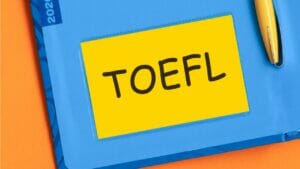
TOEFL Exam Eligibility 2023: Know Certain Criteria & Age Limit

TOEFL Accepting Universities in USA: Universities, Score, Visa
Trending now.

- Advanced Skills
- Roots & Affixes
- Grammar Review
- Verb Tenses
- Common Idioms
- Learning English Plan
- Pronunciation
- TOEFL & IELTS Vocab.
- Vocab. Games
- Grammar Practice
- Comprehension & Fluency Practice
- Suggested Reading
- Lessons & Courses
- Lesson Plans & Ideas
- ESL Worksheets+
- What's New?
Integrated Writing Essay: Better Choices for the Future
Use this integrated writing essay sample to practice your English reading, listening, note-taking, and writing skills
Essay Sample Background

While studying the TOEFL Integrated Writing Task, I wondered if I could make a similar task using related reading and audio passages.
I didn’t have much success. It's difficult to find related selections, especially some that are short enough for the TOEFL time limits.
It helped me appreciate the effort it takes to develop the materials for a truly integrated writing essay task!
The best task I made is below. It’s good academic skill and timed essay practice. But it isn’t direct practice for the TOEFL Integrated Writing task.
I didn’t feel qualified to write related reading and writing selections at the exact TOEFL level myself. The selections I found are good, but the audio does not discuss the reading passage. They are worth thinking and writing as general essay practice.
Reading and Audio Passages
If you want to write a timed essay, please read this whole section (without reading or listening to the linked passages) before you start the timer .
Treat the transcript of this TED talk by Bina Venkataraman as a reading passage, since the related passage is audio only. Read from 05:43- 07:15 . That’s 267 words, well within the 250-300 word range suggested by the TOEFL task guidelines.
Then listen to just minutes 4:27-7:00 (2.5 min.) of Shamini Bini’s discussion (how cognitive bias affects our planning for the future). It’s right after paragraph 4 in this article on gaming human nature.
Write your Integrated Writing Essay
Locate the articles, a timer or stopwatch(online or off) and a way to write and take notes. Then read the writing prompt (instructions) below and start your timer . You have 20 minutes to read, listen, and write.
Instructions: Summarize the points made in the talk, noting their relation to the points made in the reading passage.
(This is different from most TOEFL Integrated Writing prompts. Here's a sample TOEFL task 1 prompt. “Summarize the points made in the lecture, being sure to explain how they oppose specific points made in the reading passage.”
The speaker in the task on this page does not oppose or even contrast her points with the points made in the reading. They are not connected at all.)
Once you have finished your essay, you can check my sample essay below.
Sample Integrated Writing Essay
Abbreviations I used in my notes (in case they’re not obvious):
• ‘prob’= problem here (Sometimes I use it for ‘probably’)
• ‘enuf’= enough
• ‘ea’= each
• ‘yr’ = year (I also use it for ‘your’)
• ‘Univ of Chi’= University of Chicago
• ‘prof’= professor (also could be professional)
• ‘fut’= ‘future’
• ‘co.’= company
• ‘>’= ‘less than/under’
When you take notes, use any abbreviations you know you will recognize. ( That’s one good reason to practice note-taking in English . You will develop your own system.)
My actual notes:
prob: 40% workers in US—not saving enuf for retirement
“save more tom.”—ea yr
Richard Saylor, Univ of Chi. prof. Overcome cog bias by using them: fut, risk-averse, & inertia
Use those biases—start in fut, link to raises to limit loss aversion, & must opt out
took time, but when a co. willing to try, tripled savings rates in > 3 yr.
To help, must recognize our bias 1st.
2. My Essay, allowing 14 minutes and 30 seconds:
My Outline:
How to get ppl 2 invest in long term values
Ans fr rdg: make it pay enough in pre
Ans spkr- use cog bias to help.
Integrated Writing Essay:
How can we solve long-term problems when people most easily pay attention to our immediate future?
One answer, according to BinaVenkataraman, is to look for solutions that not only resolve the most important long-term problems but also help us in the present. She gives the example of saving soil by producing longer rooted plants. However, farmers must also know they can sell these crops now.
George Washington Carver set the example. He encouraged poor farmers to grow peanuts, and he made them profitable by making products that used them. His purpose was not to just make a new crop, but give farmers one that would have the soil benefits of peanuts.
Another answer is suggested by the lecture. When University of Chicago professor Richard saylor wanted to help people save more for retirement, he realized he must make our cognitive biases work for us, not against us. So he designed a program that would start saving in the future, when people feel they will be more able. To avoid the risk aversion bias, he increased savings only when their salary went up, so it would not reduce the current amount of income to work with. Finally, to avoid the inertia bias, he made the program automatic, so people would be in it unless they opted out, rather than only starting IF they opted in.
When he was finally able to get a company to try it, they found the people in the program tripled their savings in under three years.
Conclusions: find win-win solutions that aren’t too difficult in the present but still offer great future gains, and work with our cognitive biases, not against them.
Comments on that essay:
At 277 words, the essay I wrote is longer than necessary or recommended, but I was racing to write the key points.
When you compare your own essay, remember that I had three big advantages. I'm a native English speaker. I was already familiar with the ideas in the selections, and I have a spell-checker on my computer.
I also may have some disadvantages compared to you. I no longer can type well, and I hit a lot of wrong keys due to twisted fingers. The spell-checker is like a ‘handicap- accommodation' for that.
I was able to save almost a minute for last-minute correction of typos. (I saw two others—an uncapitalized name and two names run-together-- after the alarm went off! I left them, above, since this is an example of my actual test essay. Remember, the essay doesn't have to be perfect.)
It's most important that the essay answers what the instructions ask for. I did not address the prompt as well as I would like, but I did the best I could in the time allowed.
Home > English Language Test Prep > Integrated Writing Essay
Didn't find what you needed? Explain what you want in the search box below. (For example, cognates, past tense practice, or 'get along with.') Click to see the related pages on EnglishHints.
New! Comments
Would you prefer to share this page with others by linking to it?
- Click on the HTML link code below.
- Copy and paste it, adding a note of your own, into your blog, a Web page, forums, a blog comment, your Facebook account, or anywhere that someone would find this page valuable.


What's New?-- site blog
Learn about new and updated pages on EnglishHints, with just enough information to decide if you want to read more.

Do you already use English in your profession or studies-- but realize you need more advanced English or communication skills in certain areas?
I can help-- with targeted suggestions & practice on EnglishHints or with coaching or specialized help for faster results. Let me know. I can suggest resources or we can arrange a call.
Vocabulary in Minutes a Month
Sign up for our free newsletter, English Detective . In a few minutes twice a month you can:
- Improve your reading fluency with selected articles & talks on one subject (for repeated use of key words)
- Understand and practice those words using explanations, crosswords, and more
- Feel more confident about your English reading and vocab. skills-- and more prepared for big tests & challenges
For information (and a free bonus), see Building Vocabulary

Home | About me | Privacy Policy | Contact me | Affiliate Disclosure
- TOEFL Writing Correction Topics
- OET Course & Mock Test
- Writing Correction
- Speaking Mock Test
- Reading Course
- Listening Practice Tests
- FREE Practice Tests
- OET Writing Correction
- OET Reading Course
- OET Speaking Mock Test
- TOEFL Writing Correction
- PTE Writing Correction
- OET Listening Practice Tests
- OET (Occupational English Test)
- PTE (Pearson Test of English)
Sample TOEFL Integrated Writing Task

The TOEFL test consists of four sections – Reading , Listening , Speaking and Writing . In the Writing Section, you will need to do two tasks – an Integrated Task and an Independent Task . The time to complete both tasks is 50 minutes and you are advised to spend 20 minutes on the Integrated Task and 30 minutes on the Independent Task. Let’s take a look at a sample question for the Integrated Task in the TOEFL Writing Section .
For the Integrated Task , you will have to read a passage and listen to an audio recording first before you start writing. The reading passage and the audio recording will be on the same topic but will have differing views. You task is to summarize and compare these two prompts. You will be able to refer to the reading passage as you write your essay, but you will only hear the audio recording once. The time given to write your essay is 20 minutes and you will need to write a minimum of 150 words.
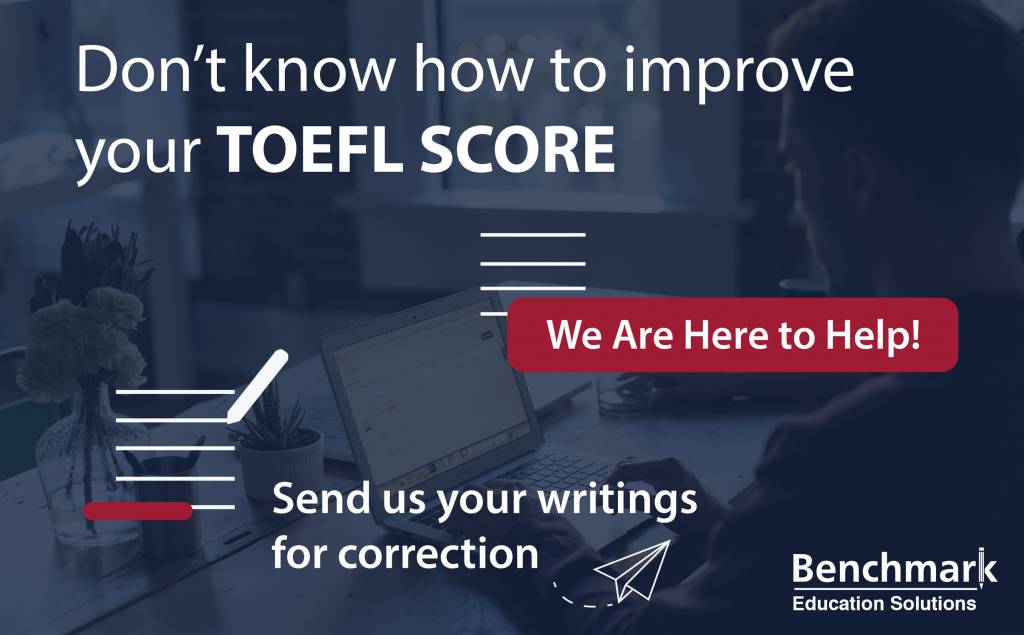
Reading passage Critics say that current voting systems used in the United States are inefficient and often lead to the inaccurate counting of votes. Miscounts can be especially damaging if an election is closely contested. Those critics would like the traditional systems to be replaced with far more efficient and trustworthy computerized voting systems. In traditional voting, one major source of inaccuracy is that people accidentally vote for the wrong candidate. Voters usually have to find the name of their candidate on a large sheet of paper containing many names—the ballot—and make a small mark next to that name. People with poor eyesight can easily mark the wrong name. The computerized voting machines have an easy-to-use touch-screen technology: to cast a vote, a voter needs only to touch the candidate’s name on the screen to record a vote for that candidate; voters can even have the computer magnify the name for easier viewing. Another major problem with old voting systems is that they rely heavily on people to count the votes. Officials must often count up the votes one by one, going through every ballot and recording the vote. Since they have to deal with thousands of ballots, it is almost inevitable that they will make mistakes. If an error is detected, a long and expensive recount has to take place. In contrast, computerized systems remove the possibility of human error, since all the vote counting is done quickly and automatically by the computers. Finally some people say it is too risky to implement complicated voting technology nationwide. But without giving it a thought, governments and individuals alike trust other complex computer technology every day to be perfectly accurate in banking transactions as well as in the communication of highly sensitive information.
Lecture Transcript (Narrator) Now listen to part of a lecture on the topic you just read about. (Female professor) While traditional voting systems have some problems, it’s doubtful that computerized voting will make the situation any better. Computerized voting may seem easy for people who are used to computers. But what about people who aren’t? People who can’t afford computers, people who don’t use them on a regular basis—these people will have trouble using computerized voting machines. These voters can easily cast the wrong vote or be discouraged from voting altogether because of fear of technology. Furthermore, it’s true that humans make mistakes when they count up ballots by hand. But are we sure that computers will do a better job? After all, computers are programmed by humans, so “human error” can show up in mistakes in their programs. And the errors caused by these defective programs may be far more serious. The worst a human official can do is miss a few ballots. But an error in a computer program can result in thousands of votes being miscounted or even permanently removed from the record. And in many voting systems, there is no physical record of the votes, so a computer recount in the case of a suspected error is impossible! As for our trust of computer technology for banking and communications, remember one thing: these systems are used daily and they are used heavily. They didn’t work flawlessly when they were first introduced. They had to be improved on and improved on until they got as reliable as they are today. But voting happens only once every two years nationally in the United States and not much more than twice a year in many local areas. This is hardly sufficient for us to develop confidence that computerized voting can be fully trusted.
Question : Summarize the points made in the lecture, being sure to explain how they oppose specific points made in the reading passage .
TIME : 20 minutes RECOMMENDED ESSAY LENGTH : 150-225 words

4 thoughts on “Sample TOEFL Integrated Writing Task”
the reading and lecture comparing about the voting system by using a computer or traditionally. in the passage author prefers the computerized voting system. in contrast, the speaker refuses the claim made in the passage. first, according to the speaker, casting the vote by using a computer is not easy for those who have no idea to operate the computer. those who have no computer are discouraged from voting. which is challenged to the author who emphasizes the computer voting is easier for anyone since it has overcome the difficulties of searching the name of the candidate in the huge name list. the passage also claims there might be a potential mistake while casting vote on paper since there is a small tick mark which might be confusing to the people having poor sight. second, the lecture corrects the author’s opinions about the effective counting capability of computing than counting manually. the speaker claims that the computer is programmed by human and there might be human error associates with. the error made in manual counting is less significant than the error in counting by computing. manual counting may alter a few balots whereas counting by machine alters thousands of balots. If there is a mistake in the counting of balot, the situation will be complex because there is no record of balot in the computer voting system. third, people use computing banking and other financial activity daily. they trust the computing system. the author claims. in another hand, the lecture casts doubt on this. the speaker says that the use of computer paying system is done daily and the error associating can find out and eliminate as soon as possible. but the election is done every 2 years so the error associates with the computer vote-counting system can’t be detected and avoided.
This reading and lecture are comparing the voting system by using a computer or traditionally. In the passage, the author said the traditional voting should be replaced by a far more efficient and trustworthy computerized voting because the Voters usually have to find the name of their candidate on a large sheet of paper containing many names—the ballot—and make a small mark next to that name. People with poor eyesight can easily mark the wrong name. But the lecturer said computerized voting may seem easy but not everyone has the luxury of using a computer or even affording one but does that mean they can’t vote? and these voters can cast the vote wrong or get discouraged because of the fear of technology. Every citizen has the right to vote, and the only way that makes everyone on the same level is by voting traditionally. Furthermore, people indeed make mistakes while counting the votes, but does that mean computers are perfect? After all, computers are programmed by humans, so human error can occur in the program and that can be far more serious. Errors in computers can result in miscounted votes or remove all records of votes and a computer recount in the case of a suspected error is impossible! but if there is a discount in the traditional voting system, the tellers can just recount them. Finally, the author said it is too risky to implement complicated voting technology nationwide. But without giving it a thought, governments and individuals alike trust other complex computer technology every day to be perfectly accurate in banking transactions as well as in the communication of highly sensitive information. but the lecturer said these systems are used daily and they are used heavily. They didn’t work flawlessly when they were first introduced. They had to be improved on and improved on until they got as reliable as they are today. But voting happens only once every two years nationally in the United States and not much more than twice a year in many local areas. This is hardly sufficient for us to develop confidence that computerized voting can be fully trusted.
The author and the lecturer both express about the computerized voting systems. The reading explains that the use of computers will simplify the way of counting votes and take little time to accomplish the work. The speaker in the lectures opposes this idea in three different ways. The reading argued that the use of computers will be easier and help the votes not to be destroyed at the end of the work. The lecturer sees this in different ways as he says that the use of compurers will be difficult for those who are technophobic and have the problem of eysesight. Second, the reading explains that the use of a computer will reduce counting errors. This idea was opposed by the lecturer when he explain that computers were made by humans so they can make the same errors as other people do. Finally, the writers express that it’s better to belives in traditional ways of counting votes because is the way which is safe more than computers from banks because it needs to be changed always while voting was mad once in more than three years
Leave a Reply Cancel reply
Your email address will not be published. Required fields are marked *
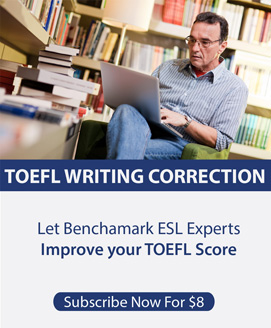
- TOEFL Writing
- TOEFL Integrated Writing
- TOEFL Independent Writing
- TOEFL Writing Practice
- TOEFL SAMPLE ESSAYS
- TOEFL Reading
- TOEFL Speaking
- TOEFL Listening
- TOEFL Grammar
- Teaching and Learning
Alternative Writing Assignments: The Integrated Paper
- June 29, 2011
- Genevieve Pinto Zipp
As faculty working with students to explore topics of interests we frequently request that they review the literature to gain an understanding of what is known and unknown about a topic and then present their findings in an integrated manner. While many students are familiar with developing papers termed “literature reviews” or “reviews of the literature,” these types of papers frequently do not afford the students the opportunity to integrate what has been found. Thus faculty have begun to require that students present their findings and thoughts via what is known as an “integrated paper format.”
For graduate students the term, “integrated paper” sometimes stirs up a state of confusion. Is an integrated paper a literature review, a research proposal, or an essay? Well the answer is simple, no. An integrated paper is a type of review of the literature that includes the analysis, synthesis and evaluation of information on a well-defined content area and includes the writer’s original thoughts and ideas on the topic which are based upon the available evidence .
The integrated paper begins with a brief introduction to the area of interest and focuses the reader’s attention on the issue and background of the problem. This brief introduction leads the writer into a review of each of the pertinent areas that must be explored to gain an understanding of the many facets associated with the subject of interest. It is the writer’s responsibility to provide logical transitions from one pertinent area to another. It is through these transitions that the reader begins to understand the larger picture. While discussing the findings within a pertinent content area the writer should:
- distinguish between assertion and evidence in the studies
- identify methodological strengths and weakness of the studies
- identify relationships among the studies
- identify major trends or patterns in the results
- note how the reviewed articles relate to your topic
- identify gaps in the literature
- finally, consider designing a table(s) that compares important characteristics of studies reviewed.
After discussing each of these pertinent areas, it is the writer’s responsibility to write a conclusion that provides closure for the reader . The conclusion should be coherent and well pointed and lead the reader’s attention to the direction which the writer perceives is the logical next step. If the review is multifaceted and challenging for the reader to make all the necessary connections the writer should provide a summary section prior to the conclusion. The summary section should present the key points that resonated from your review of each pertinent area presented. Once the reader has processed through this integrated summary the writer can provide the paper’s conclusion and direct the reader to the next logical point of inquiry.
As a faculty member, I have found that reviewing my expectations with regard to the integrated paper at the beginning of the semester provides the students with a clear road map for success. Constructing a grading rubric that coincides with these expectations also adds clarity to the process for the student. But clearly, writing an integrated paper requires reflection and critical thinking , plus ample time to organize your thoughts in both a non written and written format and a willingness to write multiple drafts. Students don’t always immediately recognize the depth that instructors are looking for in these papers so any direction we can offer them at the start will help them better meet our expectations.
Genevieve Pinto Zipp, PT, EdD, is an associate professor in the Department of Graduate Programs in Health Sciences at Seton Hall University’s School of Health and Medical Sciences.
This Post Has 5 Comments
Fascinating. The advice offered in the final paragraph is applicable to any major assignment.
Pingback: Teo-Education.Com » Blog Archive » Alternative Writing Assignments: The Integrated Paper
this description of an integrated paper really helped me a lot for my graduate studies assignment… i'll also share this with my peers. Thanks a lot!
Thanks, Dr. Zipp. I am going to distribute this to my students so that they have a clearer understanding as to what an integrated paper really is all about. As always, you are a great educator, and I am so glad to have had the opportunity to take classes with you.
Comments are closed.
Stay Updated with Faculty Focus!
Get exclusive access to programs, reports, podcast episodes, articles, and more!
- Opens in a new tab
Welcome Back
Username or Email
Remember Me
Already a subscriber? log in here.

TOEFL Prep Online Guides and Tips
The best toefl writing templates for any prompt.
Even if English composition isn’t your forte, you can still earn a high score on the TOEFL Writing section by following a template. But what exactly is a TOEFL Writing template? Simply put, TOEFL essay templates teach you how to organize your thoughts, select strong pieces of evidence, and get the Writing score you want .
In this article, we’re providing you with two high-quality TOEFL essay templates for the Integrated and Independent Writing tasks. Before that, we’ll go over the differences between the two TOEFL Writing tasks and then discuss how our TOEFL essay templates can benefit you. After, we’ll teach you how to customize and use our templates.
What Essays Will You Write on the TOEFL?
The Writing section is the final section you’ll face on the TOEFL, and it consists of two separate tasks: an Integrated Writing task and an Independent Writing task . The Integrated task requires you to write a response comparing a lecture and an article, whereas the Independent task requires you to write an opinionated essay in which you agree or disagree with an idea.
Below, we examine the two TOEFL Writing tasks in detail.
Integrated Writing Task
For the Integrated task, you must read a passage on an academic topic for three minutes and then listen to a short lecture on the same topic. This lecture will either support or challenge what’s written in the passage. Your response must summarize the main points discussed in the lecture and explain how these points relate to the reading .
You’ll have a total of 20 minutes to write your response. Your response should be around 150-225 words . During this time, you may reread the passage; however, you may not listen to the lecture again.
By the way: we have built the world's best online TOEFL course . Get online practice (TPO-sytle!) and individual grading and feedback on Speaking and Writing.
Learn how you can improve your TOEFL score by 15 points today .
The score you receive for this task will be on a scale of 0-5 . According to the official rubric , a level-5 essay (i.e., a perfect essay) selects the most crucial information from the lecture and presents it in a coherent, accurate, and well-organized manner. A level-3 essay is satisfactory but overall vague, with fewer key points and several grammatical errors. Finally, a level-1 essay offers minimal coherency and fails to address any of the main points in the lecture. ETS (the creators of the TOEFL) offers several samples of scored Integrated essays online.
Below is an example of an Integrated Writing task borrowed from ETS :
Reading Passage
Critics say that current voting systems used in the United States are inefficient and often lead to the inaccurate counting of votes. Miscounts can be especially damaging if an election is closely contested. Those critics would like the traditional systems to be replaced with far more efficient and trustworthy computerized voting systems.
In traditional voting, one major source of inaccuracy is that people accidentally vote for the wrong candidate. Voters usually have to find the name of their candidate on a large sheet of paper containing many names—the ballot—and make a small mark next to that name. People with poor eyesight can easily mark the wrong name. The computerized voting machines have an easy-to-use touch-screen technology: to cast a vote, a voter needs only to touch the candidate’s name on the screen to record a vote for that candidate; voters can even have the computer magnify the name for easier viewing.
Another major problem with old voting systems is that they rely heavily on people to count the votes. Officials must often count up the votes one by one, going through every ballot and recording the vote. Since they have to deal with thousands of ballots, it is almost inevitable that they will make mistakes. If an error is detected, a long and expensive recount has to take place. In contrast, computerized systems remove the possibility of human error, since all the vote counting is done quickly and automatically by the computers.
Finally some people say it is too risky to implement complicated voting technology nationwide. But without giving it a thought, governments and individuals alike trust other complex computer technology every day to be perfectly accurate in banking transactions as well as in the communication of highly sensitive information.
Lecture Transcript
(Narrator) Now listen to part of a lecture on the topic you just read about.
(Female professor) While traditional voting systems have some problems, it’s doubtful that computerized voting will make the situation any better. Computerized voting may seem easy for people who are used to computers. But what about people who aren’t? People who can’t afford computers, people who don’t use them on a regular basis—these people will have trouble using computerized voting machines. These voters can easily cast the wrong vote or be discouraged from voting altogether because of fear of technology. Furthermore, it’s true that humans make mistakes when they count up ballots by hand. But are we sure that computers will do a better job? After all, computers are programmed by humans, so “human error” can show up in mistakes in their programs. And the errors caused by these defective programs may be far more serious. The worst a human official can do is miss a few ballots. But an error in a computer program can result in thousands of votes being miscounted or even permanently removed from the record. And in many voting systems, there is no physical record of the votes, so a computer recount in the case of a suspected error is impossible! As for our trust of computer technology for banking and communications, remember one thing: these systems are used daily and they are used heavily. They didn’t work flawlessly when they were first introduced. They had to be improved on and improved on until they got as reliable as they are today. But voting happens only once every two years nationally in the United States and not much more than twice a year in many local areas. This is hardly sufficient for us to develop confidence that computerized voting can be fully trusted.
Question: Summarize the points made in the lecture, being sure to explain how they oppose specific points made in the reading passage.

Independent Writing Task
For the Independent task, you will write about your opinion on a certain topic . You must provide clear reasons and specific examples for why you agree or disagree with the issue or statement. (This doesn’t have to be your real opinion, though!) You’ll have 30 minutes to write your response. A typical high-scoring essay is at least 300 words .
You’ll receive a score on a scale of 0-5 . According to the official rubric , a level-5 essay effectively addresses the topic, provides clear and ample details, and contains at most only minor issues with grammar and word choice. A level-3 essay offers a generally coherent response with occasional slips in clarity. Finally, a level-1 essay offers little to no detail and contains multiple technical errors. You can look at samples of Independent essays on the ETS website.
Here is an example of an Independent Writing task taken from ETS :
Do you agree or disagree with the following statement?
Always telling the truth is the most important consideration in any relationship.
Use specific reasons and examples to support your answer.
Integrated Task vs. Independent Task
So far we’ve covered all of the basic components of the TOEFL Writing tasks. To briefly recap, here is an overview of the Integrated and Independent Writing tasks:

What Is a TOEFL Writing Template?
The purpose of a TOEFL Writing template is to help you compose a detailed and eloquent essay — and of course get you a high Writing score! But what exactly is a template?
It’s easiest to think of an essay template as a skeleton . While a skeleton is the framework for a body, a template is the framework for an essay . Thus, a TOEFL Writing template highlights basic structural patterns and phrases you can integrate into your own writing. What a template doesn’t do is write your essay for you. Ultimately, it’s up to you to decide how you’ll add the skin and muscles (i.e., the details and supporting evidence) to your “skeleton.”
Furthermore, writing templates are typically created to suit different types of essays . For example, a template for a compare/contrast essay will differ from a template for an editorial piece. This is why it’s so important you use a writing template specifically geared toward the TOEFL!
What Are the Benefits of a TOEFL Writing Template?
There are three major benefits to using a TOEFL Writing template.
It Organizes Your Thoughts
Using a TOEFL Writing template ensures you’ll have a focused and well-organized response . A high-quality template teaches you how to structure your response so that your introductory, body, and concluding paragraphs are all clearly defined. This way, even if your grammar and spelling aren’t perfect, your response will still have an overall strong framework that’s easy to follow.
TOEFL essay templates also show you what kinds of transitions you can use and where . Transitions are a key component of essays that allow you to connect your thoughts and progress to new ideas smoothly. Truth be told, you probably won’t score super highly on the TOEFL Writing section if you don’t use any transitions!
It Saves You Time
Another big benefit of using a TOEFL Writing template is that it saves you time on the Writing section. Since you’ll already have a sense of how you’re going to structure your essay, you’ll spend less time planning it out and coming up with transitions, openings, and closings. As a result, you’ll get more time to actually write out your response!
It Gives You Confidence
Lastly, a TOEFL Writing template allows you to feel more prepared on test day. Many test takers find it difficult to write out responses to English-language prompts in only 20 or 30 minutes. But TOEFL essay templates equip you with the skills you’ll need to feel more confident in your writing skills — and confidence is the first step toward getting a great TOEFL score!

2 TOEFL Essay Templates for You to Use
In this section, we offer you a TOEFL Integrated Writing template and an Independent Writing TOEFL template . We also provide you with a handy list of key transitional words and phrases you can incorporate into your essays.
Please note that you do not need to follow these templates directly. In fact, we strongly encourage you to replace our sample words and phrases with your own . We will talk more about how to customize our TOEFL essay templates in the following section. But for now, let’s take a look at the templates!
Template 1: Integrated Writing Task
Before we dive into our TOEFL Integrated Writing template, let’s get a quick reminder of what the Integrated task entails.
For this task, you’ll read a passage and then listen to a lecture. Your task is to summarize the lecture and explain whether the lecture challenges or supports what’s written in the passage. You’ll have 20 minutes to compose a response of around 150-225 words .
We’ll divide our template into four paragraphs: an introduction and three body paragraphs . You shouldn’t need a separate concluding paragraph for this task, as you can still score a 5 without one (plus, you likely won’t have enough time to write one!). But if you want to write a conclusion, just be sure you keep it short — two to three sentences at most.
Now, on to the TOEFL Integrated Writing template!
Paragraph 1 (Introduction)
Your first paragraph will introduce the lecture and how it relates to the reading. This paragraph doesn’t need to be long; a simple two or three sentences should suffice.
1. Begin with a topic sentence that summarizes the main point of the lecture.
- According to the lecture, …
- Based on the lecture, …
- The lecturer states/believes that …
- The lecturer talks about …
- The lecturer discusses …
2. Next, explain whether the passage refutes or supports the main point of the lecture.
Examples (Contrast):
- By contrast, the author of the passage explains/states/posits that …
- The author of the passage, however, disagrees with this idea/belief. Instead, he/she believes that …
- The author of the passage, however, doubts this idea/belief and thinks that …
- The author challenges this point, however, by explaining/suggesting/positing that …
Examples (Agreement):
- This line of thinking agrees with that of the author, who states that …
- The author of the passage agrees with this notion/idea/belief, stating that …
- Likewise, the author of the passage explains/states/posits that …
- The author of the passage supports this idea/belief, explaining that …
Paragraph 2 (Body)
In this paragraph, you’ll want to focus on one of the key points in the lecture and explain whether the passage refutes or supports this idea.
1. Introduce the main point you’ll be discussing.
- First, the lecturer asserts/claims/suggests that …
- For one, the lecturer thinks/believes that …
- The first point the lecturer makes is that …
2. Next, describe this particular point in more detail and then discuss how the passage either refutes or supports it. I suggest using one to two sentences here.
- On the other hand, the author asserts/claims/suggests that …
- Likewise, the author thinks/believes that …
- This concept is refuted/supported by the passage, which asserts/claims/suggests that …
3. Finally, conclude your paragraph by explaining what this difference or similarity means .
Want to improve your TOEFL score by 15 points?
Registration is now open for our best TOEFL course . We guarantee your money back if you don't improve your TOEFL score by 15 points or more.
PrepScholar TOEFL is online and it features thousands of practice questions and 1-on-1 Speaking and Writing review and feedback.
- This difference/similarity ultimately means/indicates that …
- Basically, the lecturer/author is saying that …
- The lecturer and author are essentially in agreement with each other. Both think/believe that …
- Clearly, the lecturer and author maintain different views on …

Paragraph 3 (Body)
In this paragraph, you’ll focus on another key point in the lecture and again discuss how the passage either agrees or disagrees with this idea. The structure here is essentially identical to that of paragraph 2, so make sure you are using new transitions and varying your word choice.
1. Start by introducing the second point in the lecture you’ll be discussing. Because this is your second body paragraph, do not use transitions such as “first” or “first of all.”
- Second, the lecturer argues/contends/asserts that …
- Next, the lecturer suggests/proposes that …
- Another key point the lecturer makes is that …
2. Next, explain this key point in more detail and elaborate on how it is either refuted or supported by the passage. As with paragraph 2, I recommend using one to two sentences here.
- In other words, the lecturer is suggesting/proposing that …
- The author, however, agrees/disagrees with this idea/belief, suggesting/proposing that …
- Similarly, the author argues/contends/asserts that …
3. Finally, explain what this difference or similarity means .
- What this difference/similarity means is that …
- This difference/similarity in thinking tells us that …
- Evidently, the lecturer thinks/believes that … , whereas the author thinks/believes that …
Paragraph 4 (Body + Conclusion)
This final body paragraph will offer your last key point in addition to a brief conclusion . Once again, try to vary your transitions and words here so that your body paragraphs do not sound redundant.
1. Introduce and summarize the third point in the lecture . This is your third and final body paragraph, so do not use transitions such as “first” or “next.” Instead, use transitions such as “third,” “finally,” “last,” and “lastly.”
- Third, the lecturer explains/states that …
- Finally, the lecturer introduces the idea that …
- Lastly, the lecturer goes on to say that …
2. Then, explain this point in more detail and discuss whether the passage matches or challenges it. Use one or two sentences here.
- This point is also made in the passage, which argues/contends/asserts that …
- The passage supports this idea, suggesting/proposing that …
- On the contrary, the author writes that …
3. Finally, conclude your paragraph by explaining the significance of this similarity or difference . You should also look at this sentence as the conclusion to your entire response . Remember, you do not need to write a separate concluding paragraph for this task; it’s perfectly OK to combine it with your last body paragraph!
- In conclusion, the lecturer and author appear to be in agreement/disagreement about …
- All in all, the lecturer argues/contends/asserts that … , whereas the author argues/contends/asserts that …

Template 2: Independent Writing Task
For this task, you will read a short prompt and then write a response explaining whether you agree or disagree with the issue or idea. Unlike the Integrated task, here you’ll be writing an opinionated response (though you do not have to write about your actual opinion).
You’ll have 30 minutes to write an essay of at least 300 words . Because this essay should be longer than the Integrated task, it’s best to use the basic five-paragraph structure, with an introduction, three body paragraphs, and a conclusion.
Note that many of the example sentences below are based on the sample Independent Writing prompt used above . This means that these sentences will not apply exactly to other prompts! So don’t simply copy the sentences onto your test; instead, use them as a general guide to help you develop a better sense of style and flow in your writing.
Now, let’s take a look at our Independent Writing TOEFL template.
In this paragraph, you’ll introduce the main issue or idea and rephrase the prompt in your own words. Then, you’ll state whether you agree or disagree with the statement and why.
1. For your first sentence, you’ll want to come up with a hook that introduces the topic of your essay in a unique and creative way. Most people start broad and then get specific . This sentence is also a great opportunity to insert a hypothetical question.
- There is great debate about .. .
- It is said that .. . But is this always true?
- Many people wonder whether telling the truth at all times is necessary in order to maintain a healthy relationship with someone .
2. Next, introduce your opinion on the topic . You may list your specific reasons for your opinion here or in the following sentence(s). Remember, this doesn’t need to be your real opinion!
- In my opinion, …
- I believe that … is important because …
- I agree/disagree with this idea/suggestion because …
- For me, although telling the truth is important , there are many cases in which it’s OK to lie .
3. Here, state how many points (three is ideal) you’ll be discussing in your essay and then briefly summarize what these reasons for agreeing or disagreeing are . Your reasons may come from facts, predictions, personal beliefs, experiences, etc.
- In this essay, I will address three potential problems with lying in relationships .
- Lying is never a smart idea because it undermines trust in relationships, causes feelings of betrayal, and often leads to more lying.

In this paragraph, you’ll introduce your first key point about the issue and offer specific examples illustrating why you agree or disagree.
1. For the first sentence, introduce the key point you want to talk about.
- First of all, lying can make it difficult to trust someone in a relationship.
2. Next, provide an example to explain why you believe this is the case . I suggest using a hypothetical situation somewhere in your essay to help illustrate one of your points.
- For example, if a father lied to his daughter by telling her she was good at drawing, the daughter might begin to wonder whether her father has lied to her about other things, too.
3. Continue your paragraph by elaborating on your example . Explain any effect or consequence of the example and discuss how this outcome supports your viewpoint.
- The next time the father praises his daughter for something, she might believe he is lying, even if he isn’t. In other words, the daughter might find it difficult to trust her father, thereby damaging their relationship.
This paragraph will follow a similar structure to that of paragraph 2, only this time you’ll discuss your second key point . To prevent this paragraph from sounding too similar to the one before it, vary your word choice and choose a different type of example on which to focus.
1. In the first sentence, introduce your second key point . Because this is your second body paragraph (and second point), make sure you employ appropriate transitions, such as “second,” “secondly,” and “next.”
- Second, lying can cause feelings of betrayal in relationships.
2. As you did in paragraph 2, use these next few sentences to elaborate on your point and offer specific examples . Always clarify how your examples support your stance (agree or disagree) and how they relate back to the issue stated in the prompt.
- When I was young, I lied to my best friend about being able to attend her birthday party. She later told me I’d betrayed her and that we couldn’t be friends anymore. Essentially, because I’d lied to her, I destroyed our relationship.

Paragraph 4 (Body)
This is the last body paragraph in which you will introduce and explain your third and final key point .
1. First, introduce your third point . As this is your final body paragraph, make sure you’re using appropriate transitions, such as “finally,” “last,” “lastly,” and “third,” to introduce your point.
- Lastly, lying often begets more lying. This means that once you tell a lie, you will become more likely to tell other lies.
2. As you did in paragraphs 2 and 3, elaborate on this point by providing new evidence, details, and/or examples. Explain why this point is important and how it supports your stance on the issue.
- If you lie but nobody knows you’ve lied, you might begin to believe it’s OK to lie. As a result, you start to lie more and more. However, once people realize how often you lie, they’ll likely lose all trust in you and might even decide to end their relationships with you.
Paragraph 5 (Conclusion)
Like the Integrated Writing task, a separate concluding paragraph isn’t always necessary here . That said, if you have time, I recommend quickly wrapping up your points in a concise yet effective conclusion. One to three sentences should suffice.
1. In the first sentence or two, summarize your stance and explain why you feel this way . You may re-introduce your three main points here. You may also paraphrase the prompt and explain once more whether you agree or disagree with the issue and why.
- In the end, I believe telling the truth is the most important consideration in a relationship.
- Ultimately, lying can easily destroy relationships because it weakens trust, results in feelings of betrayal, and often causes more lying.
2. Finally, if you have time, bring together your concluding paragraph with a single general statement about your viewpoint .
- This is why it is imperative we always refrain from lying.
- Thus, the only way to ensure your relationships with others are healthy is to always tell the truth.

54 Key Transitions & Phrases
In addition to TOEFL essay templates, we offer you an assortment of common transitions and phrases you can use in your TOEFL responses. These words will allow your writing to flow more smoothly and connect your thoughts in a clearer, more logical manner.
To add information to a point, or to introduce a new (related) point:
- In addition, …
- Additionally, …
- Furthermore, …
- Moreover, …
- Besides, …
- Also, …
To introduce an example:
- For example, …
- For instance, …
To introduce an opinion:
- I believe that …
- I think that …
To start a new body paragraph:
- First off, …
- First of all, …
- To begin/start, …
- Secondly, …
- Last, …
To add similar or related information:
- Likewise, …
- Similarly, …
- On a related note, …
To restate information in a shorter or clearer way:
- In other words, …
- In short, …
- Simply put, …
- Essentially, …
- In essence, …
- Basically, …
To contrast information:
- That (being) said, …
- Nevertheless, …
- Nonetheless, …
- By/in contrast, …
- On the contrary, …
- On the other hand, …
To show cause and effect:
- As a result, …
- Because of this, …
- As such, …
- Consequently, …
- Therefore, …
To emphasize information:
- Evidently, …
- Clearly, …
- Certainly, …
To conclude information, a paragraph, or your overall response:
- In conclusion, …
- All in all, …
- As you can see, …
- In the end, …
- Ultimately, …

How to Customize a TOEFL Writing Template
Below, we offer you a few pieces of advice to help you customize your TOEFL Writing template.
Integrated Writing Template
Here are two ways to customize our TOEFL Integrated Writing template.
#1: Tweak Sample Sentences & Openers
The sample sentence and openers we’ve provided above don’t contain any specific information, so you are welcome to incorporate these examples into your own Integrated Writing response however you like.
That said, you don’t need to use these examples exactly as they are . If you’d like to tweak them, try replacing the verbs and transitions with other (synonymous) words. I also suggest adding adverbs to emphasize certain words. So for example, instead of writing, “The author, however, disagrees with this belief,” you could write, “The author, on the other hand, strongly challenges this concept.”
Just be sure that the examples you’re using in your essay fit with the type of lecture-passage relationship you’re given. Remember, this relationship can be either supportive (in which the lecture agrees with the passage) or contrastive (in which the lecture disagrees with the passage).
#2: Use Different Words to Emphasize Contrast
Most Integrated Writing tasks will give you a lecture that challenges what’s written in the passage. In these cases, it’s important you use a variety of transitions, conjunctions, and prepositions to emphasize this important contrast throughout your essay.
There is one caveat, though: do not use a single transition more than once in your response . For instance, if you were to consistently start your supporting sentences with “however,” your essay would lack balance and begin to sound redundant. So be sure to vary your word choice!
Here is a list of strong contrastive words you can use in your Integrated Writing response:
- Nonetheless …
- Even though
- In spite of

Independent Writing Template
Here are three ways you can customize our Independent Writing TOEFL template.
#1: Choose the Side That’s Easier to Support
Although the Independent Writing task asks specifically whether you agree or disagree with an idea, you do not need to write about your real opinion . What you should really do is choose the side that’s easier to argue — regardless of whether you actually agree or disagree with it!
In other words, it’s perfectly OK to make things up for this response and pretend you support something you don’t actually believe. Remember, you are not being judged on which stance you choose but on how effectively you support your stance.
#2: Do Not Copy Sample Sentences Word for Word
For this task’s examples, I’ve primarily supplied you with whole sentences, all of which were based on the sample Independent Writing prompt used above. Because our examples refer to a specific prompt, you cannot copy these sample sentences word for word and use them in your own essay . Failing to change these sentences means your essay won’t make a whole lot of sense, if any at all!
Therefore, what you should actually be doing is using these example sentences to learn what types of details to include in your Independent Writing response. You may also use our examples to get a feel for how you can change up your sentences and word choice.
#3: Vary Your Supporting Details
For your response, you must come up with specific details and examples to support your viewpoint. These examples can range from facts and statistics to experiences and hypothetical situations.
In order to produce a truly compelling response (and get a high essay score), you must incorporate a variety of effective examples into your essay. This means you’ll want to avoid using the same types of examples for each point you make . So if you were to discuss a personal experience for your first body paragraph, focus on a different type of detail, such as a universally accepted fact or a hypothetical scenario, for your second body paragraph.

How to Use a TOEFL Writing Template: 4 Tips
Finally, here are four general tips for using a TOEFL Writing template effectively.
#1: Employ a Variety of Transitions
The sample sentences and openers we’ve given you for each template above contain different transitions to help link ideas together; thus, we encourage you to use a variety of transitions in your own essays . For ideas, refer to our transition list above. This list can help you swap out some of our sample transitions for other ones you believe fit better with your writing.
Ultimately, varying your word choice is critical to ensuring your essay is well written . This means that a high-scoring TOEFL essay will not simply use transitions but use them well . So if you’ve already inserted “therefore” in one area, try using “as a result” or “thus” in another area. You’ll still get the same meaning but with a stronger, more versatile effect.
#2: Add Details Without Rambling
Don’t feel limited by the number of sentences we’ve included in each body paragraph in our templates. If you need to use two or three sentences to explain a point, that’s OK! You should always give a lot of detail for your points — so long as you are staying concise and focused.
For example, if you spend a paragraph discussing a hypothetical scenario but fail to offer any analysis, you probably won’t receive a high TOEFL score. Likewise, if you write a verbose introduction or conclusion, your score may end up being lower than you wanted it to be.
Basically, you must find the perfect balance between detail and analysis. A good way to monitor this balance is to always try to hit the word minimum for each task . Doing this means you’ll likely have an essay that’s sufficiently detailed. Just try not to exceed the maximum or you’ll risk rambling!
#3: 2 Strong Points Is Better Than 3 Weak Ones
Each of our TOEFL essay templates above has three body paragraphs and three main points. Although three points is a solid number of points, if you can only think of two points, just stick with those and try to support them as clearly and effectively as possible.
As you can see in the sample TOEFL essays here , many essays with scores of 2 and 3 actually address three points — but their points are altogether weak, with few supporting details and insufficient analysis. What this means is that just having three points in your essay isn’t enough to guarantee you a high essay score . Thus, it’s far better to write an essay with two strong points than three weak ones.
#4: Do Not Copy Entire Sentences From the Prompt
If you struggle with English, you might be tempted to borrow some sentences and phrases from the prompt. While it’s OK to paraphrase sentences, you should never copy exact sentences from your prompt .
Copying the prompt shows evaluators that you lack the English level necessary for writing creatively and analytically. On top of this, copying is also a form of plagiarism, which means you are essentially “stealing” another’s work.
So what does this mean for your score? If you copy entire sentences and phrases from the reading or topic, you will receive a score of 0 .

Additional Resources for TOEFL Essay Templates
In addition to our templates above, here are a couple of online resources offering high-quality TOEFL essay templates you can use for free.
- TOEFL Resources : This resource offers detailed templates for the Integrated and Independent Writing tasks along with useful transitional phrases and sentence openers.
- Magoosh : This handy PDF contains a lengthy list of transitions as well as various sample TOEFL essays.
Recap: How Can a TOEFL Writing Template Help You?
TOEFL essay templates are an especially useful component of TOEFL prep because they raise your chance of achieving a high TOEFL Writing score .
With TOEFL essay templates, you can organize your thoughts more clearly, spend less time outlining your responses, and prepare for the TOEFL with increased confidence. Our templates are also flexible , allowing you to customize certain elements to your liking and cater the templates to many different prompts.
When using a TOEFL template, always remember the following four tips:
- Employ a variety of transitions throughout your essay
- Add details but try not to ramble
- Two strong point are better than three weak ones
- Do not copy exact sentences from the prompt
Now that you’re equipped with our TOEFL essay templates and the knowledge of how to use them, you should have no trouble getting a great TOEFL Writing score!
What’s Next?
Seeking additional help with the TOEFL Writing section? Start practicing with our 13 Writing topics and get information on what resources you can use for high-quality Writing topics .
What does a high-scoring TOEFL essay look like? Take a look at our analyses of two perfect-scoring TOEFL essays to learn what you can do to guarantee yourself a high essay score on test day.
Want more TOEFL templates? Check out our TOEFL Speaking templates to improve your English-speaking skills and confidence.
Ready to improve your TOEFL score by 15 points?
Author: Hannah Muniz
Hannah graduated summa cum laude from the University of Southern California with a bachelor’s degree in English and East Asian languages and cultures. After graduation, she taught English in Japan for two years via the JET Program. She is passionate about education, writing, and travel. View all posts by Hannah Muniz
Test Resources
TOEFL® Resources by Michael Goodine
Sample toefl integrated essay, the question.
This integrated (Type 1) question is taken from one of the writing drills in the 2016 edition of Cracking the TOEFL from Princeton Review . I am not permitted to provide the lecture and reading here, but if you need some practice questions, Princeton’s book is a decent choice.
Special Offer: TOEFL Essay Evaluation and Scoring
You can now sign up to have your practice essays evaluated and scored by the author of this page. This service is a great way to learn how you will do before test day and how you can best prepare for the big day. Sign up today .
The Sample Essay
The reading and the lecture are both about the consumption of wheat by humans in the pre-historic period. The author of the reading believes that bread was the first product produced from wheat. The lecturer casts doubt on the claims made in the article. She thinks that, in fact, beer was the first product that resulted from wheat production.
First of all, the author claims that early humans prepared wheat for consumption by grinding it between two stones. He notes that wheat was much easier to consume if it was ground into a thin paste in advance, rather than just being chewed raw. This point is challenged by the lecturer. She says that it was not necessary to grind wheat as it could be sprouted naturally in a moist environment. Furthermore, she points out that sprouted wheat is sweeter, softer and more nutritious than ground wheat.
Secondly, the author states that early humans would have easily discovered how to bake bread by exposing their ground wheat to fire. He argues that baked bread could be stored for long periods of time which would have greatly increased the value of wheat as food. This argument is rebutted by the lecturer. She suggests that humans during this period did not know how to cook food with fire. She notes that applying fire to food in order to make it more palatable was simply not an obvious idea at that time.
Finally, the author mentions that early humans would have noticed the effects of yeast spores landing on the ground wheat paste when it was left out in the open. He is of the opinion that the bubbles that formed when the yeast landed indicated to people that baked bread would be lighter and easier to eat than raw wheat. The lecturer, on the other hand, feels that fermentation happened very quickly when wheat paste was put into storage. She puts forth the idea that the nice taste of the bubbles that formed when fermentation happened would have been more likely to lead to beer production than to bread production.
This is a sample TOEFL integrated essay written by a native speaker. It follows our TOEFL writing templates for integrated essays. If you find it useful, please remember that we have many more sample essays for you to read!
Sign up for express essay evaluation today!
Submit your practice essays for evaluation by the author of this website. Get feedback on grammar, structure, vocabulary and more. Learn how to score better on the TOEFL. Feedback in 48 hours.
Sign Up Today

IMAGES
VIDEO
COMMENTS
Here's how the TOEFL Integrated Essay works: It is the first writing task on the TOEFL test. First, you will have three minutes to read an article (four paragraphs, 250 to 300 words) about an academic topic. Next, you will listen to a lecture (about 2 minutes) about the same topic. Finally, you will have 20 minutes to write an essay about the ...
Below is an official TOEFL Integrated Writing sample question and as well as an essay response that received a score of 5. It includes a written passage, the transcript of a conversation (which would be an audio recording on the actual TOEFL, and the essay prompt. After the prompt is an example of a top-scoring essay.
This first task in TOEFL Writing really is all about note-taking, paraphrasing, and reporting. Read on to learn all about TOEFL Writing Task 1! The TOEFL Integrated Writing Task requires you to read a passage that is about 250-300 words long. You then must listen to a lecture that is 2 to 2.5 minutes long. The lecture will challenge or disagree ...
Another free resource by ETS, this PDF presents a number of TOEFL Integrated Writing sample responses, from low- to high-scoring ones. With this resource, you'll get one TOEFL Integrated Writing task with a passage and lecture transcript. And as for sample essays, you'll get: Two level-5 essays; Three level-4 essays; Three level-3 essays
The TOEFL integrated writing task is the first of the two writing tasks in the TOEFL exam. It's designed to assess your ability to combine listening and reading skills to write a coherent and well-structured essay. Here's a detailed breakdown: Reading passage: A passage around 200-250 words long is provided.
How to Write a TOEFL Integrated Essay. The writing section is the final section of the TOEFL test. It has 2 different question types, and you get one question from each question type in your test. You only get 20 minutes for question 1 and 30 minutes for question 2, so it can be difficult at first to come up with a high-scoring essay within ...
The TOEFL iBT test Writing section measures your ability to write in English in an academic setting, and to present your ideas in a clear, well-organized way. There are two writing tasks. Integrated writing task (20 minutes) — read a short passage and listen to a short lecture, then write in response to what you read and listened to.
Writing Practice Set 1 (Integrated): Passage, Lecture, and Question Directions: Give yourself 3 minutes to read the passage. Reading Time: 3 minutes ... Development of your essay is judged by the amount and kinds of support (reasons, examples, details) that you present, and a well-developed essay will contain clearly appropriate ...
Writing Practice Set 1: (Integrated) -- Passage, Lecture, and Question . Directions: Give yourself 3 minutes to read the passage. Reading Time: 3 minutes . In an effort to encourage ecologically sustainable forestry practices, an international organization started issuing certifications to wood companies that meet high ecological
Service: TOEFL Essay Evaluation . The TOEFL ® Integrated Essay. The first writing question is the Integrated Essay Task. For this task, you'll first read a short article on an academic topic. Next, you will listen to a short lecture on the same topic. Finally, you'll have 20 minutes to write an essay that includes details from both sources.
in. TOEFL Writing Task 1 (Integrated) For many students taking the TOEFL, scoring a 5 out of 5 on each of the two TOEFL essays—which would lead to a perfect score of 30 in the writing section—is the ultimate goal. Getting there takes a lot of practice, but it pays off nicely! Scoring so high in one section can counterbalance slightly lower ...
Integrated Essay Template (Writing Question One) The Introduction. No matter what question style is used, write your introduction using the following template: The reading and the lecture are both about _____. While the author of the article argues that ____, the lecturer disputes the claims mentioned in the article. His position is that _____.
TOEFL® iBT Writing Sample Responses There are two writing tasks on the next generation TOEFL Internet-based test (iBT). The first is an integrated task that requires test takers to read, listen, and then write in response to what they have read and heard. The second is an independent task where test takers support an opinion on a topic.
The TOEFL integrated writing task is not a true essay like you practice in other parts of this textbook. There is not a full introduction. There is no conclusion. There is no place for your own personal feelings and opinions on the topic. You thesis statement is not creative. You don't need 5 paragraphs with 5 sentences each. Task format
TOEFL Writing Introduction. The writing section is the fourth section of the TOEFL iBT test and takes about 50 minutes to complete. It consists of two separate tasks: an Integrated Writing task and an Academic Discussion Writing task.The Independent task requires you to write an opinionated essay based on your own knowledge and experience, whereas the Integrated task requires you to write a ...
For this purpose, candidates can refer to the below questions on integrated task writing TOEFL. Question 1: Summarise the essential points mentioned in this passage and give inputs according to what is mentioned in the lecture. TOEFL New Format. Sample Reading Passage:
Write your Integrated Writing Essay. Locate the articles, a timer or stopwatch (online or off) and a way to write and take notes. Then read the writing prompt (instructions) below and start your timer. You have 20 minutes to read, listen, and write. Instructions: Summarize the points made in the talk, noting their relation to the points made in ...
The time given to write your essay is 20 minutes and you will need to write a minimum of 150 words. Here is a sample question for this task. Please take note that the audio recording is presented as a transcript here but in the actual test, you will not see this transcript but will only hear it. TOEFL Integrated Writing Task sample.
As faculty working with students to explore topics of interests we frequently request that they review the literature to gain an understanding of what is known and unknown about a topic and then present their findings in an integrated manner. While many students are familiar with developing papers termed "literature reviews" or "reviews of the literature," these types of papers ...
Because this essay should be longer than the Integrated task, it's best to use the basic five-paragraph structure, with an introduction, three body paragraphs, and a conclusion. Note that many of the example sentences below are based on the sample Independent Writing prompt used above.
The integration essay is a requirement for earning your certificate. 4. We will be reading your essay with the following criteria in mind: • Essay is well-written. Both in terms of structure and organization, and at the sentence level, your essay must be clearly and effectively written for the appropriate audience.
The Sample Essay. The reading and the lecture are both about the consumption of wheat by humans in the pre-historic period. The author of the reading believes that bread was the first product produced from wheat. The lecturer casts doubt on the claims made in the article. She thinks that, in fact, beer was the first product that resulted from ...